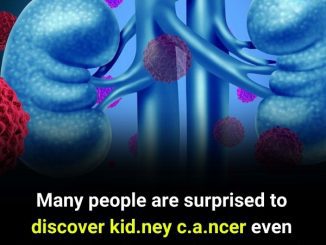Non-alcoholic fatty liver disease (NAFLD) is a growing health concern linked to metabolic disorders. It involves the accumulation of fat in the liver and is often associated with obesity, diabetes, high cholesterol, and other conditions. While it may sound alarming, the good news is that NAFLD can often be reversed with the right lifestyle changes. Let’s explore how you can take control and improve your liver health naturally.
Understanding Fatty Liver Disease

Fatty liver disease occurs when too much fat builds up in the liver cells. Unlike other liver diseases, NAFLD often doesn’t cause permanent damage—if addressed early. Most people with this condition are asymptomatic, meaning they may not even realize they have it. However, some might experience symptoms like:
- Pain or fullness in the middle or right side of the abdomen.
- Persistent fatigue.
Although NAFLD is most common in middle-aged adults, it can affect anyone, including children.
Risk Factors for Fatty Liver Disease
Several factors increase your risk of developing NAFLD, including:
- Being overweight or obese.
- Having diabetes or insulin resistance.
- High cholesterol or triglycerides.
- High blood pressure.
- Chronic liver infections, such as hepatitis C.
Addressing these underlying conditions is a crucial step in reversing fatty liver disease.
Weight Loss: The Key to Reversal
One of the most effective ways to manage and reverse NAFLD is by losing excess weight. Studies show that losing as little as 3-5% of your body weight can significantly improve liver health, while a 10% reduction can help reverse fat buildup altogether.
Here are some practical tips to achieve healthy weight loss:
- Adopt a Balanced Diet: Focus on nutrient-rich foods and avoid calorie-dense, processed items.
- Increase Physical Activity: Incorporate at least 150 minutes of moderate exercise weekly.
- Seek Professional Guidance: Consult your doctor about safe and effective weight loss methods, which may include surgery or medication in severe cases.
Treat Underlying Health Conditions
Fatty liver disease is closely linked to other health problems. Addressing these conditions can help reverse liver fat accumulation. Conditions to monitor and treat include:
- Diabetes: Manage blood sugar levels through diet, medication, or insulin therapy.
- High Blood Fat Levels: Reduce cholesterol and triglycerides through a healthy diet and medications like statins if necessary.
- Sleep Apnea: Treat sleep disorders that exacerbate metabolic imbalances.
- Hormonal Imbalances: Address issues like hypothyroidism or polycystic ovary syndrome (PCOS) with appropriate treatments.
Dietary Changes to Support Liver Health

Your diet plays a vital role in reversing fatty liver disease. Incorporating liver-friendly foods and avoiding harmful ones can make a world of difference.
- What to Eat:
- Fresh fruits and vegetables.
- High-fiber foods like whole grains, beans, and lentils.
- Fatty fish, such as salmon and mackerel, which are rich in omega-3 fatty acids.
- What to Avoid:
- Sugary beverages and snacks.
- Refined carbs like white bread and pastries.
- Saturated fats found in fried foods and processed meats.
- Excess salt, which can lead to water retention and increased blood pressure.
Surprisingly, your morning cup of coffee might help! Studies suggest that coffee can reduce liver inflammation and support overall liver health.
Reduce Stress on Your Liver
Your liver works hard to detoxify your body, so minimizing additional stress is essential.
- Avoid Alcohol: Alcohol exacerbates fat accumulation in the liver. If quitting entirely feels overwhelming, reduce your intake—less than one drink per day for women and two for men is a good guideline.
- Be Cautious with Medications: Overuse of acetaminophen or NSAIDs like ibuprofen can harm your liver. Always follow dosage instructions and consult your doctor about potential risks.
Medications and Supplements

While there’s no specific medication approved for NAFLD, certain treatments may help in advanced cases, such as metabolic dysfunction-associated fatty liver disease (MAFLD), which involves inflammation and liver damage.
- Vaccinations: Protect your liver by staying up to date on hepatitis A and B vaccinations and annual flu shots.
- Vitamin E: Some studies show that vitamin E may improve liver function in people with NAFLD, but it’s not without risks. Consult your doctor before trying this supplement.
Lifestyle Changes That Make a Difference
Reversing fatty liver disease isn’t just about diet and medication—it’s about adopting a healthier lifestyle overall. Here are some additional tips:
- Stay Active: Regular exercise improves insulin sensitivity and reduces liver fat.
- Get Quality Sleep: Poor sleep can worsen metabolic disorders, so aim for 7-8 hours of uninterrupted rest each night.
- Manage Stress: High stress levels can disrupt hormonal balance, impacting your liver health. Try mindfulness, yoga, or meditation to keep stress in check.
What to Expect When You Make Changes

By committing to these changes, you can expect to see improvements in your overall health and liver function over time. Some benefits include:
- Reduced liver fat and inflammation.
- Lower cholesterol and triglyceride levels.
- Improved energy levels and reduced fatigue.
- Enhanced metabolic health.
Consistency is key, so stick with your plan and celebrate small victories along the way.
Conclusion: Take Control of Your Liver Health
Fatty liver disease might sound intimidating, but it’s a condition you can take charge of. With weight loss, dietary changes, and healthier habits, you can reverse liver fat accumulation and improve your overall health. The earlier you act, the better your chances of avoiding complications and supporting a healthier, happier life.


